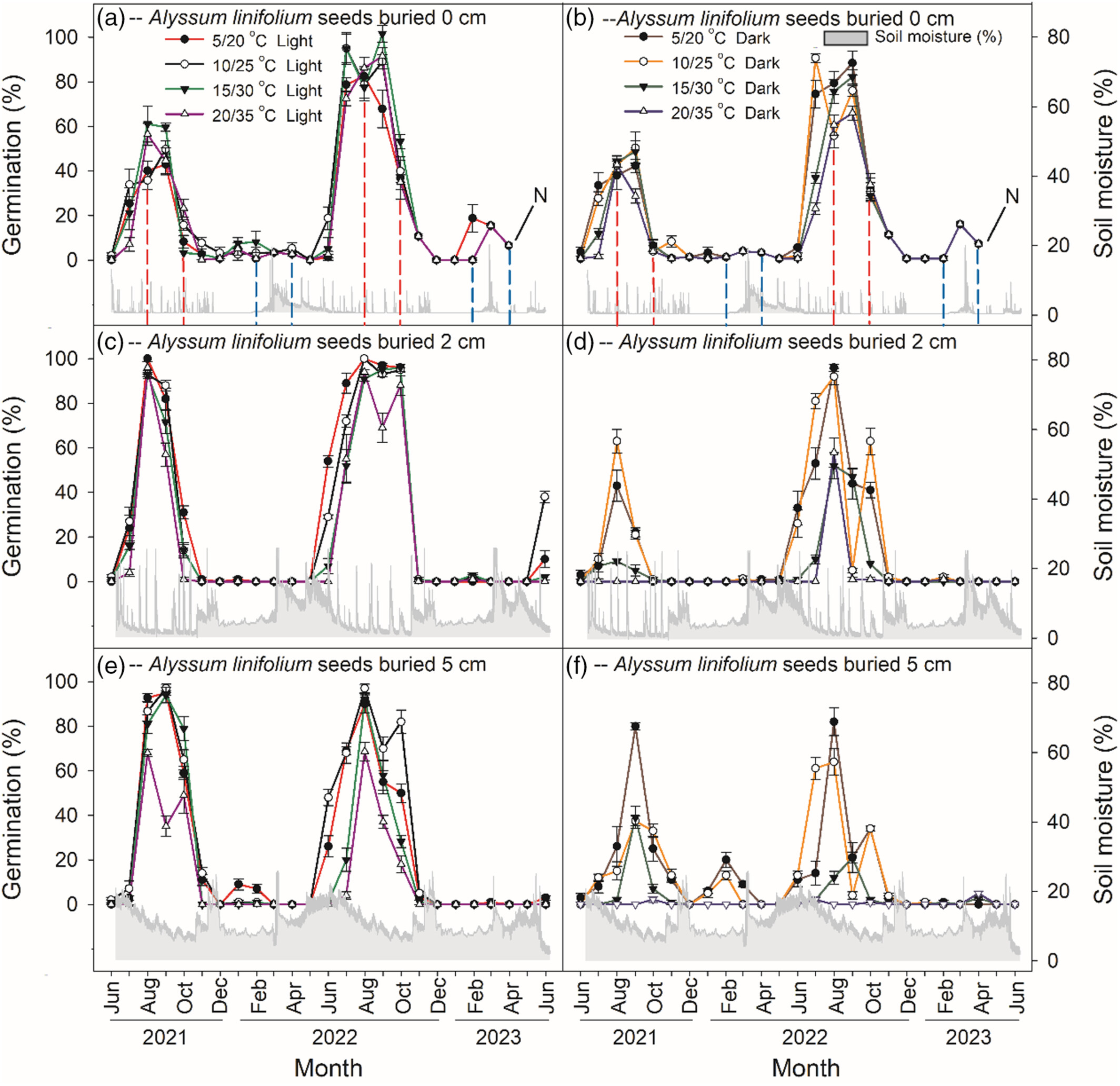A Research team led by Prof. HUANG Zhenying from the Institute of Botany of the Chinese Academy of Sciences (CAS) has discovered a remarkable survival strategy-a unique seed dormancy cycling mechanism in two desert ephemeral plants, Alyssum linifolium and Tetracme quadricornis.
This study, published in the Journal of Ecology, reveals how these plants adapt to the extreme conditions of the Gurbantunggut Desert in Central Asia by going through two dormancy cycles each year, enabling them to produce two different groups of seedlings annually. And it offers new insights into how desert plants manage to survive in such unpredictable environments.
Desert ephemeral plants are known for their ability to complete their life cycle in a short period during brief windows of favorable conditions, such as rainfall or snowmelt. Relying heavily on seed survival during prolonged dry seasons, the timing of seed dormancy and germination is crucial for their survival. However, until now, the exact mechanisms that govern this dormancy cycling remained poorly understood.
Over the course of two years of field and laboratory research, the team observed the life-history strategies of A. linifolium and T. quadricornis. They discovered that the seeds of both plants undergo a unique twice-yearly dormancy cycle. Initially, after the seeds mature, they enter a dormant state that prevents germination. During the hot summer months, this dormancy is gradually broken through a process called dry after-ripening, allowing seeds to germinate in autumn, provided the soil has enough moisture.
If the seeds do not germinate in autumn, they enter a second dormant phase during the winter. In early spring, some of these dormant seeds break dormancy again through a brief period of cold stratification, which allows them to germinate in spring.
This strategy results in two distinct groups of seedlings each year: one group that germinates in autumn and another that germinates in spring. A. linifolium predominantly produces autumn-germinated (AG) seedlings, which have a longer growth period but lower survival rates, while T. quadricornis mainly produces spring-germinated (SG) seedlings, which grow rapidly and have a higher chance of surviving. This dual germination strategy functions as a "bet-hedging" mechanism, helping the plants cope with the desert's unpredictable rainfall and temperature fluctuations.
The study not only offer new insights into plant dormancy and germination but also emphasize the resilience of desert plants and their ability to adapt to extreme environments. It deepens our understanding of the ecological adaptations that allow desert plants to thrive in harsh conditions.
The study was a collaborative effort with researchers from the Xinjiang Institute of Ecology and Geography of CAS, the University of Kentucky, and the Ben-Gurion University of the Negev.

Dormancy cycle of soil seeds of two ephemeral plants (Image by GUO Ruru et al.)






